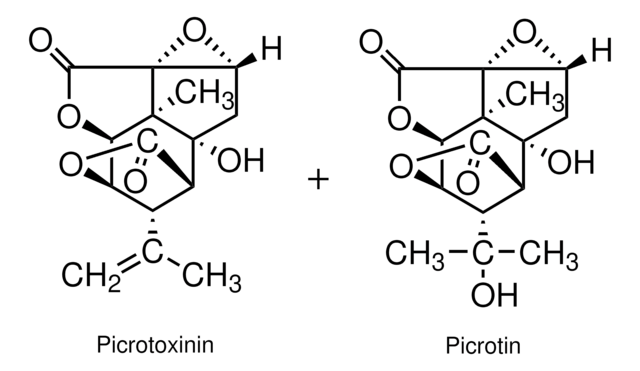추천 제품
애플리케이션
ADP-ribosyltransferase C3 from Clostridium botulinum may be used to study cellular signaling and G protein expression .
생화학적/생리학적 작용
ADP-ribosyltransferase C3 from Clostridium botulinum ribosylates rho in eukaryotes in the presence of NAD. The ADP-ribosylating exoenzyme forms a single major 25 kDA (approx.) band with SDS electrophoresis. The enzyme labels 21-24 kDa proteins in tissues such as the human platelet membranes.
Ribosylates rho in eukaryotes in the presence of NAD.
Storage Class Code
11 - Combustible Solids
WGK
WGK 3
Flash Point (°F)
Not applicable
Flash Point (°C)
Not applicable
개인 보호 장비
dust mask type N95 (US), Eyeshields, Gloves
Qi Jia et al.
Plant molecular biology, 82(4-5), 339-351 (2013-04-30)
Besides the KU-dependent classical non-homologous end-joining (C-NHEJ) pathway, an alternative NHEJ pathway first identified in mammalian systems, which is often called the back-up NHEJ (B-NHEJ) pathway, was also found in plants. In mammalian systems PARP was found to be one
Y Ohoka et al.
Journal of biochemistry, 109(3), 428-435 (1991-03-01)
A GTP-binding protein with an Mr of 24,000 was purified from a cholate extract of bovine brain membranes in addition to the previously reported alpha beta gamma-trimeric GTP-binding proteins (G proteins). Partial amino acid sequence analysis of the purified 24-kDa
K Aktories et al.
European journal of biochemistry, 172(2), 445-450 (1988-03-01)
A novel ADP-ribosyltransferase C3 was purified to homogeneity from filtrates of certain strains of Clostridium botulinum type C by ammonium sulfate precipitation, gel filtration, ion-exchange chromatography and heat treatment. The molecular mass of botulinum ADP-ribosyltransferase C3 was found to be
E Andreas Larsson et al.
Journal of medicinal chemistry, 56(11), 4497-4508 (2013-05-16)
Tankyrases constitute potential drug targets for cancer and myelin-degrading diseases. We have applied a structure- and biophysics-driven fragment-based ligand design strategy to discover a novel family of potent inhibitors for human tankyrases. Biophysical screening based on a thermal shift assay
Noriko Hosoya et al.
Cancer science, 105(4), 370-388 (2014-02-04)
Cancer chemotherapy and radiotherapy are designed to kill cancer cells mostly by inducing DNA damage. DNA damage is normally recognized and repaired by the intrinsic DNA damage response machinery. If the damaged lesions are successfully repaired, the cells will survive.
자사의 과학자팀은 생명 과학, 재료 과학, 화학 합성, 크로마토그래피, 분석 및 기타 많은 영역을 포함한 모든 과학 분야에 경험이 있습니다..
고객지원팀으로 연락바랍니다.







